Fundamental and Preventive Curvatures
1/30
There's no tags or description
Looks like no tags are added yet.
Name | Mastery | Learn | Test | Matching | Spaced |
|---|
No study sessions yet.
31 Terms

Contact areas
Found on the mesial and distal of the teeth at the widest portion and greatest curvature.
Convex area on a proximal surface that touches the adjacent tooth in the same arch.
Not a point but a flattened portion of the tooth where it touches the tooth next to it.
Proximal Contact Areas
Flattened portion of the tooth where it touches the tooth next to it in the same dental arch.

Locate proximal contact
Look at a facial or lingual or incisal (occlusal) view.
You can draw in a contact area when you have a proximal view but you really cannot see where it is.
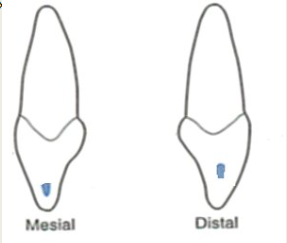
Diastema
Any spacing between teeth in the same arch.
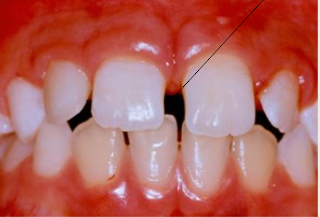
Location of Contact
Anterior teeth contact area is located incisally.
Posterior teeth contact area is located more cervical.
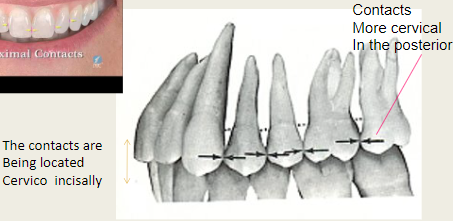
Anterior teeth
Have contact areas located about in the middle (faciolingually) when you look at an incisal view.
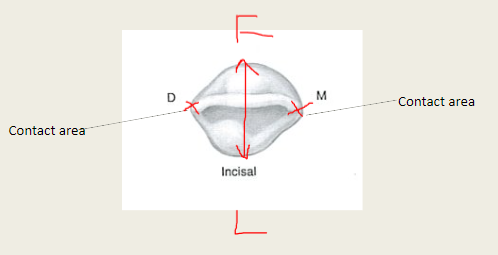
Posterior Teeth
Have contact areas located more facially when you look at them in an occlusal view.
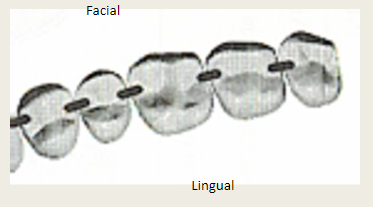
Contact Point
Refers to the place where the teeth occlude at the occlusal surface.
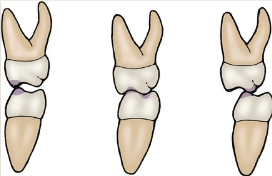
Embrasure
Spillways are the spaces between teeth that are occlusal to the contact areas.
Purpose:
Allow food to be moved away from contact areas
Dissipate and reduce the forces of occlusal trauma
Provide self-cleaning by the action of the tongue, cheeks, and lips
Protect the gingiva from undue trauma.
Named for their location in relation to the contact area.
Facial (buccal or labial)
Lingual
Incisal
Occlusal
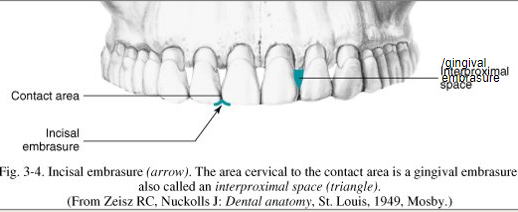
Anterior embrasure size
Facial and lingual embrasure should be about the same size.
Posterior teeth embrasure size
Lingual embrasure is larger than the facial due to contact being closer to facial surface.
Crest of Curvature (Height of Contour)
Widest contour of the crown on the facial or lingual.
Anterior Teeth Crest of Curvature
Facial and lingual are both located on the cervical third of the crown.
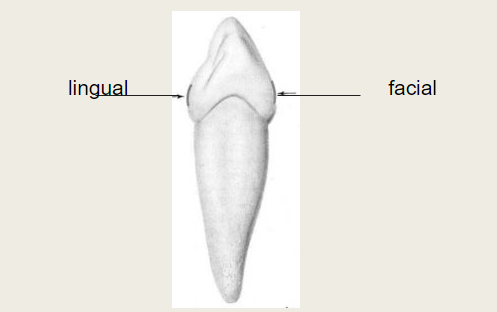
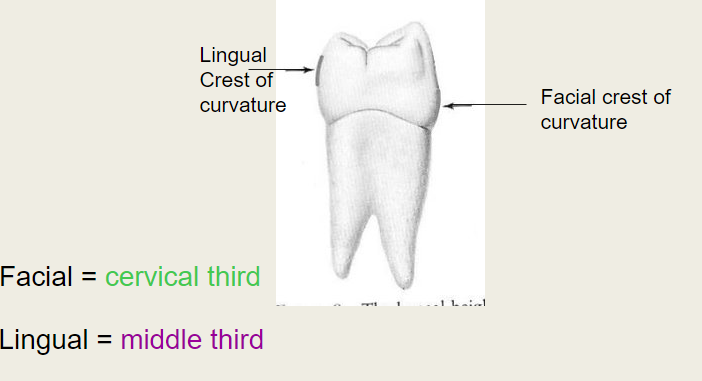
Posterior teeth crest of curvature
Facial is on the cervical third and lingual is located on the middle third.
Facial and Lingual Contours
Direct food off teeth and against gingiva at proper angle
Too much deflection = not enough gingival stimulation
Too little deflection = allows food to pack into the gingival crevice.
Allows tongue to rest against the tooth
Facial height allows for maximum cleaning of lips and cheeks.
Buccal height is generally at the cervical third of the tooth.
Lingual height of contour for anterior teeth at cervical third; lingual crest of curvature for posterior is at or near the middle part.
Cervical Line
Curvature depends on the height of the contact area above the crown cervix and on the diameter of the crown labiolingually or buccolingually.
Mesial curvature of a tooth is greater than the distal curvature of the same tooth.
Mandibular anterior teeth show less curvature than their maxillary counterparts.
Posterior teeth in both arches show little variation
Curvature of the CEJ is usually about 1 mm less on the distal surface of the tooth than on the mesial surface.
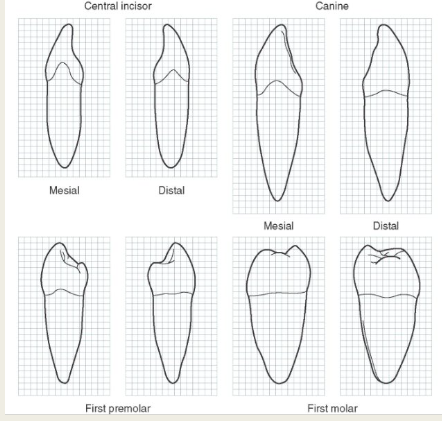
Curvature of CEJ
Anterior teeth have more of a curve as they are narrower and need more bone interdentally so it will protrude incisally. There is more cementum also for the PDL to attach to and provide support to the anterior tooth.
Self-cleaning qualities of teeth
Smooth Enamel
Helps food and sticky substances slip off the crown of the tooth and allows the tooth to remain relatively free of bacteria, thus lessening decay and periodontal disease
Shape
Deflects food
Developmental Lobes
Growth centers where each tooth begins to develop
Centers grow from the tooth germ
Grow until they fuse (coalescence); point of fusion leaves a line (developmental groove)
Number of lobes necessary depends on the type of tooth.
All anterior teeth develop from four lobes (3 labial and 1 lingual)
Developmental Grooves
Fine depressed lines in the enamel of a tooth that mark the union of the lobes of the crown.
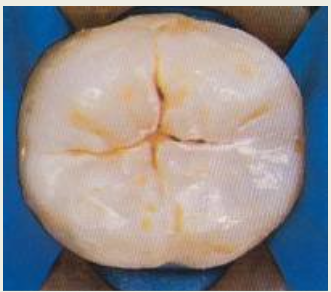
Lobes
Part of a tooth formed by any one of the major developing centers that begin calcification of the tooth.

Fossa
Wide, round shallow depression in the surface of a tooth as seen commonly on lingual surfaces of maxillary incisors or between the cusps of molars.
Pit
Small pointed depression in dental enamel
Ridge
Long narrow elevation or crest, as on the surface of a tooth or bone.
Marginal Ridge
Ridge or elevation of enamel forming the margin of the surface of a tooth, at the mesial and distal margins of the occlusal surfaces of premolars and molars and at the mesial and distal margins of the lingual surfaces of incisors and canines.
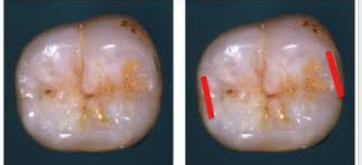
Cingulum (Cingula)
Lingual lobe of anterior teeth
Cusp
Major pointed or rounded eminence on or near the occlusal surface of a tooth.
Concavity
Depression on a surface
Convexity
Bulge in a surface.

Triangular Ridge
Any ridge on the occlusal surface of a posterior tooth that extends from the point of the cusp to the central groove of the occlusal surface.
Transverse Ridge
Ridge formed by the union of two triangular ridges, transversing the surface of a posterior tooth from the buccal to the lingual side.